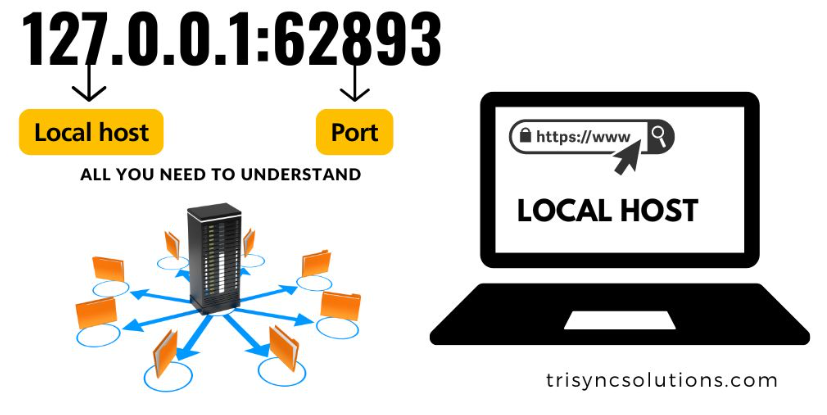Understanding 127.0.0.1:62893: A Comprehensive Guide
 Trisync Solutions
Trisync Solutions
In the world of networking, IP addresses play a critical role in enabling communication between devices over the internet or local networks. One commonly encountered IP address is "127.0.0.1," also known as the loopback address or localhost. It serves a special function by allowing a computer to communicate with itself. This is an essential concept for developers and IT professionals who need to test applications or services locally before deploying them. Another key element involved in this process is the port number. When combined with an IP address, a port number directs traffic to a specific service or application on the machine. But what exactly does "127.0.0.1:62893" mean, and why is it significant for development and networking?
Breaking Down 127.0.0.1:62893
When you see "127.0.0.1:62893," you're looking at a combination of two important components: an IP address (127.0.0.1) and a port number (62893). The IP address, 127.0.0.1, is reserved for localhost communication. It's essentially a way for your computer to route messages back to itself. When you use this address, your machine isn’t interacting with the outside world but rather running internal processes. This is useful for testing environments because it allows developers to work on projects locally without exposing them to external networks.
The second part of "127.0.0.1:62893" is the port number, in this case, 62893. Ports are communication endpoints used to differentiate between different services or applications running on the same machine. Each service that operates over the network listens on a specific port. In this case, 62893 refers to a dynamic or ephemeral port assigned temporarily by the operating system when the application starts. This number may change each time the service or application is initiated, and it helps direct traffic correctly.
Why 127.0.0.1:62893 Matters for Developers
For developers, understanding the importance of "127.0.0.1:62893" is crucial when setting up local environments. During the development process, it's common to run applications or web servers locally to ensure everything works correctly before launching it in a live environment. Using 127.0.0.1 means the developer can isolate the work and make changes without affecting or exposing the application to external users.
The port number, such as 62893, plays an equally important role. In many cases, several applications or services are running on a single machine simultaneously. To differentiate between these processes, the system assigns each one a unique port number. This allows multiple instances of different programs, such as web servers, databases, or APIs, to run concurrently without conflicts. Developers often specify custom port numbers, but in some cases, the operating system dynamically assigns one. In a local testing environment, a port like 62893 might be automatically chosen, meaning the developer has to keep track of it when accessing the local server through a browser.
Practical Use of 127.0.0.1:62893
Let’s consider an example: A developer is working on a web application and starts a local server. The server is assigned the address "127.0.0.1" to ensure it's only accessible from the same machine. The operating system assigns a dynamic port, say 62893, for the communication. To access this server, the developer would open a browser and type "127.0.0.1:62893" into the address bar. This directs the request to the local server on port 62893, allowing the developer to view and test the web application in real-time.
This method is essential not just for web development but also for database management, API testing, and debugging. The localhost setup ensures that all interactions remain within the machine, avoiding any external interference. By working on 127.0.0.1:62893, developers can simulate the performance of their applications in a controlled environment that mirrors how it would function once deployed.
Conclusion
In conclusion, 127.0.0.1:62893 represents a combination of an IP address and a port number used to run local applications or services on a machine. Understanding how this setup works is critical for developers as it allows for safe, isolated testing environments before exposing applications to the wider internet. The IP address 127.0.0.1 ensures that the communication stays within the machine, while the port number 62893 specifies which service or application is being accessed. This system is fundamental to the development and debugging processes, ensuring that applications function correctly and securely before they go live.
Subscribe to my newsletter
Read articles from Trisync Solutions directly inside your inbox. Subscribe to the newsletter, and don't miss out.
Written by
